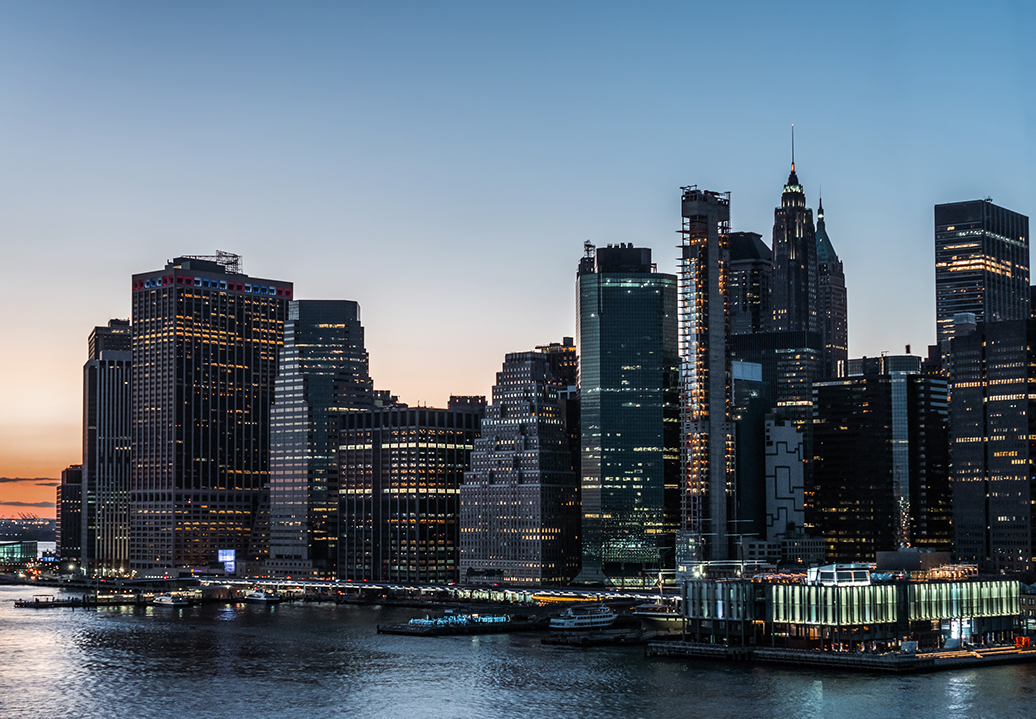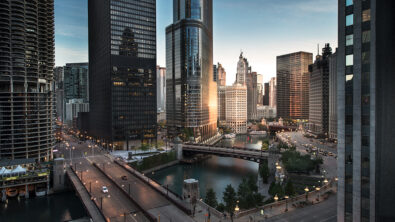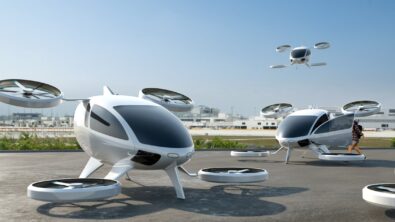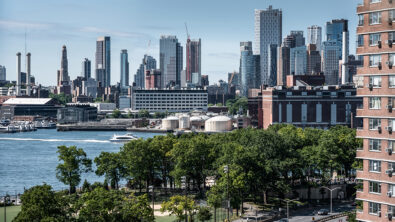Rethinking Infrastructure for AAM Part Two – Transcript

In this episode of Talking Aerospace Today, Todd Tuthill and John Nixon continue their discussion of infrastructure for advanced air mobility (AAM), namely vertiports. They highlight ways to power vertiports, how they can influence the design of AAM vehicles, and where the digital twin can play a role.
Patty Russo: Greetings and welcome. We’re here for another episode of Talking Aerospace Today from Siemens Digital Industries Software. I’m Patty Russo and I’m responsible for global marketing for our aerospace and defense vertical here at Siemens. Thank you for joining us today. In our last episode, we kicked off exploration of another key challenge facing the advanced air mobility sector: infrastructure. AAM is very different from current and existing modes of transportation, and as such it will require places for takeoff and landing that are suited for AAMC’s operational and service needs. We were joined by Todd Tuthill, our VP of A&D here at Siemens, as well as John Nixon, who is our Vice President of Energy, Chemicals, and Infrastructure.
Patty Russo: Last time we talked about what these places known as vertiports might look like. We also talked about how they would interact with the existing electrical grid. Some really interesting insights for sure. Today we’ll pick up where we left off and begin with a question for John. So John, I suspect that those in the audience that think like I do are wondering based on you know, some of the comments you and Todd just mentioned, what is being considered or maybe already in development as ways to mitigate the impact of what we were talking about before in terms of the current state of the grid on the AAM industry. What are things, what are potential things in development to positively impact what is potentially a current unreliability in the electric grid?
John Nixon: So thank you, Patty. You know, mitigating the impacts of an unreliable electrical grid on the advanced air mobility industry, it’s crucial for ensuring both sustainability and now what we’re talking about, reliability. Here’s just a few examples of some strategies that are in place. For example, distributed energy resources, you know, or what we call DER. So integrating DER’s such as rooftop solar panels, small wind turbines, and battery storage systems, as some examples at vertiports, those could reduce the load on the central grid. These resources provide local power for charging air taxis and reducing, you know, say demand during peak times.
John Nixon: We’ve got micro grids. Developing micro grids at vertiports can enhance resilience and reliability. Microgrids are localized energy systems that can operate independently from the central grid. They can integrate various DERs, like I just talked about, and energy storage solutions to provide a stable power supply, even during grid outages. When I mentioned the Texas outage in 2021 earlier, HEB grocery stores kept their lights on and their freezers running because the CEO at HEB had a vision of creating microgrids for his stores so they were beacons in a crisis. Food, water, ice. They were resources in one of our greatest crises as a state. Small modular reactors. I mentioned that earlier. Exploring advanced nuclear power options such as SMRs combined with microgrids can provide a reliable and low carbon energy source to support the additional demand from AAM.
John Nixon: In fact, again, I referenced the earlier outage in 2021. You know what happened in 2023? You had Dow Corporation in Seadrift, Texas say, “We’re putting nuclear behind the meter and onsite because we’ve got to have onsite reliable, dependable power.” Or you’ve got smart grid technologies. You’ve got energy storage systems. You even have demand response programs. You know, implementing these strategies, the advanced air mobility industry can mitigate the impact of an unreliable electric grid, ensuring a sustainable and reliable power supply for the advanced air mobility operations.
Todd Tuthill: Wow, John, I think that’s the third time you mentioned small modular reactors today. I was expecting to talk about electricity. I didn’t know we’re going to have a nuclear reactors. That’s kind of cool. So tell us, you know, because I’m wondering, our listeners are probably wondering, “Gee, really, we could do that?” Is our society really ready to put small modular reactors all around urban areas on top of parking garages and vertiports?
John Nixon: Well, I’ll tell you, working at Siemens, I love every day I’m here. I get to meet the most incredible entrepreneurs and innovators, be it from academia, from industry. It’s incredible to see the minds today, the men and women leading this conversation around how do I electrify our species? You know, small modular reactors? They’re increasingly gaining traction and they are becoming a viable option for urban areas. Let’s look at the technology development. I mean, SMRs, small modular reactors, SMRs are, they’ve advanced significantly just in the last five years. It’s incredible designs from companies. They’ve actually received regulatory approvals now.
John Nixon: And you know, we didn’t have any of that going on for the longest time since the 70s. Now you’re seeing this and several pilot projects are underway globally. Safety and scalability. SMRs are designed with these incredible safety features now, including passive cooling systems that reduce the risk of accidents. Their smaller size makes them far more adaptable and easier to integrate into existing urban infrastructures. The fuel technology, we’re not talking long rods of nuclear material. It’s incredible how they’re taking the remaining embers of the Big Bang that we call uranium 235 and they’re now enriching it in ways that are intrinsically safe. It’s incredible.
John Nixon: Deployment timeline. The first commercial SMRs, they’re really expected to be operational in the late 2020s, and I’ve been out to the manufacturing facilities where they’re putting the devices together, and we’re well on our way with that. And SMRs, when it comes to urban integration, they’re suitable for urban areas due to their compact footprint and ability to provide stable, low-carbon base load power. They can be installed closer to demand centers and that will also reduce transmission losses and, again, enhanced stability. So you know they’re not widely deployed yet, but they are well on track to become a reliable and safe energy source for these urban areas well within the next decade.
Todd Tuthill: Well, Patty, I don’t know about you, but I keep thinking of, you know, the scene from back to the future with Mr. Fusion. 1.2 gigawatts. Maybe that’s not too far off from the future, I don’t know. That’s interesting.
Patty Russo: Yeah, there’s a lot, definitely a lot more solutions, and I agree John with you about being in this company and learning and just seeing what’s on the horizon. So there’s really some, sounds like some really interesting solutions on the horizon as it pertains to the electric grid and helping to support the advancements in the aerospace side of things. But I want to shift gears to cover a question, John, about the, kind of the comparison with automotive industry. Obviously, automotive industry is ahead of A&D in terms of electric vehicles. What can you tell us about the lessons that have been learned in the auto industry regarding charging EV’s that could be leveraged, or that the aerospace and defense industry can leverage, as they develop, as we develop AAMs?
John Nixon: Patty, great question. And as we all know, those who forget their history are doomed to repeat it. So let’s look at the auto industry. You know, it has faced numerous challenges and opportunities in the transition to electric vehicles and there are several key lessons that the AAM industry, the advanced air mobility industry, could learn from those experiences. One of the critical lessons is the importance of building a robust and widespread charging infrastructure. And just as EV adoption depends on the availability of charging stations, the success of air mobility will rely on the development of vertiports equipped with efficient charging facilities.
John Nixon: And then on considering standardization, the auto industry has finally made strides in standardizing charging connectors and protocols that has simplified the charging process for consumers and manufacturers. The advanced air mobility industry should prioritize similar standardization efforts to ensure compatibility and ease of use across, you know, different types of air taxis and vertiports. Now, this dovetails with advances in fast charging technology, which has been pivotal in the EV market. The advanced air mobility industry. Can benefit from developing and implementing fast charging solutions that minimize downtime, and of course maximize operational efficiency. This would include exploring, well in advance, what are the ultra fast charging options that can quickly recharge air taxi batteries?
John Nixon: Fun fact, S&P global mobility projects that the US will need around two, a little bit more than two million level two public charging stations and around 172,000 level 3, this would be DC fast charging public charging stations, by 2030. And the auto industry has learned the importance of integrating charging infrastructure with the grid to manage demand and supply effectively. So implementing smart grid technologies and demand response strategies can help advanced air mobility industry manage the additional load on the grid and ensure reliable power supply. And just a final note, effective battery management systems have been crucial in extending the lifespan and performance of EV batteries and the advanced air mobility industry should invest in advance, you know, battery management systems.
John Nixon: But I think Todd, you’re going to have one of my colleagues who runs our battery industry, you know, strategy. They’ll probably talk a lot more about that.
Todd Tuthill: As well, yeah, I think that’s the plan for the next episode. Absolutely. And we we’ll get into batteries and all those things. But yeah, they’re very related topics.
Patty Russo: Yeah, nice teaser there. What we’re talking about is two sides of the equation to the AAM industry, and it’s the design and development of the AAMs themselves and the design and development of the vertiports. So my next question, Todd, is for you. What are some of the additional design challenges that companies developing AAMs need to consider other than power when it comes to vertiport design? Is it just about charging the EV’s or are there other related risks to consider?
Todd Tuthill: It’s all sorts of interesting design challenges that we have, again, thinking about. I’ll go back to, we talked about vertiports a bit in the beginning, but I’ll go back there. It’s about putting these places that may charge five to six to ten of these vehicles all over cities, places that are convenient and close. To where all the customers that people who want to fly them will be. Now there’ll be some in the out outside of cities too, to fly people into cities. But the bulk of them are going to be centered, at least initially, in urban areas, and that’s due to several aspects. But one of the one of the issues that we’ll talk about next time is range, and these EV’s right now, most of them have a maximum range of 100 miles.
Todd Tuthill: So we’re not talking about doing outside of maybe some close cities in Europe. We’re really not talking about city to city travel. We’re talking about travel within a city. So that’s going to cause us to have vertiports in a lot of cities. The thinking right now is that the best place to put these will probably be on the top story of parking garages. So if you think you’ve got a couple hundred parking garages in the city, well, maybe you can have a couple hundred vertiports, and that starts to give you an idea of the size of what one of these vertiports will be. Again, maybe on the order of a bus station or maybe not even as large as a bus station, but nothing on the order of the size of an airport.
Todd Tuthill: And that brings in some really interesting challenges too. Again, if you think about the whole idea behind advanced air mobility, it’s to get with a place within a city to avoid the city traffic, to get there quickly. So one of the first design considerations around that has to be speed. I want to get into the vertiport quickly. I want to get onto my aircraft quickly and get on to where I’m going to go quickly. Because again, you know, if it’s going to take me, if you think about checking into an airport and all the security you have to go through and all the time it takes to get through an airport, if it takes me an hour, an hour and a half to queue up and get on to one of these flights, there’s no business there.
Todd Tuthill: So speed’s a key aspect, but security is too. Because certainly, you know we don’t want to spend all this time in a security line, but we absolutely need security. So what’s security going to look like in one of these things? I mean, last time I was on a bus in Tokyo a few months ago/ I didn’t go through metal detector in the bus station in Tokyo, but I certainly did once I got to the airport, you know. What is that going to look like? We have to consider those things. We got to consider the impact on air traffic. As I talked about earlier, we’re talking about potentially hundreds of these things flying around cities.
Todd Tuthill: They’re probably not going to fly at 30,000 feet like the other air aircraft are. They’re going to fly in this corridor probably 2,000, to four or 5,000 feet high is probably where they’re going to travel. And I don’t think we’re just going to see these things used for to transport people. We may actually see more UAV’s to transport cargo initially, because it’s easier to get certification to carry cargo than people,. But I think one of the big things we’ve got to think about in the design of these things is maintenance. Again, I was thinking about this. If you think about a bus terminal, one big difference between a bus terminal and an airport, you know there’s typically more bus terminals in the city than there are airports.
Todd Tuthill: But at an airport, you tend to have a much larger number of aircraft there and you tend to have a central maintenance facility. Maybe multiple maintenance facilities. Last time I was in a bus station, I didn’t see a large maintenance facility there. And that’s partially because if a bus breaks down, I can tow it to a maintenance facility. Well, what happens if this 50-foot wingspan aircraft that I’m landing on top of a parking garage has a maintenance problem, breaks down? I can’t fly it. I can’t tow it. What am I going to do? You know, how are we going to handle maintenance in a facility like that? So I think that’s certainly a big thing to think about too. What does maintenance look like? How does maintenance happen or is there maintenance in every facility and all kinds of things to think about with respect to maintenance. We could go on, but I’ll stop there for now.
Patty Russo: Yeah, I am actually going to build on that with one follow up question, Todd. And that is, it’s not just really about the maintenance, if something breaks down. But I think as we talk about design in other areas of the industry, we talk about preparing for regular service to avoid breakdowns or to mitigate risk of breakdowns and do kind of build that into the design. So what are some of the design considerations for AAMs that would enable or more easily facilitate field serviceability at a vertiport.
Todd Tuthill: First thing comes to mind is modularity, and if I was, you know, if you think about designing one of these aircraft, there are aspects of it that are going to be inherently very reliable and there’s going to be things that will be a little bit less reliable, things that wear out, you know, like you think about an automobile, the brakes on a car. It’s not that they’re unreliable, they just wear out, have to be worked on. So I think we need to think about modular designs, ease of access to the parts, but another thing, again, if you go back to this, this idea of these vertiports set on top of parking garages, there’s going to be times where parts are going to come off of these aircrafts.
Todd Tuthill: They’re probably going to be put into a truck and driven to another central maintenance facility, because I, you know, just from an economic standpoint, if you think about composite parts and all these things, we’re not going to put autoclaves on top of every vertiport, I don’t think. So you got to think about this idea that I’ve got to, in an urban area, take any part on that aircraft, pull it off, that that would need to be serviced off-site, put it on the truck and drive it down. You know, you think about the last time you’re in a parking garage and that little, that little circular thing you drove down and how tight it was to Get your car through.
Todd Tuthill: Well, I’m going to get parts of this 50-foot wingspan aircraft down that little part of that parking garage, I’ve got to get it through busy city streets off to a service facility and get it back quickly. And that certainly affects the design of an aircraft. I can’t have, you know, while it might be convenient if you think about a 787, the idea is reduce the number of parts, make big giant composite structures to go on to that. Well, can I do that on advanced air mobility aircraft if I might need to service it? And again, maybe the answer is yes, maybe the answer is no, but we’ve got to you got to think about that in the design of an aircraft to be able to do that.
Todd Tuthill: And maybe that’s a really good use of a digital twin. You know, I’m going to, I’m going to have to do not just the digital twin of the design of the aircraft, but the digital twin for serviceability. Let’s look at some scenarios for these parts coming off an aircraft. I take it down these parking garages. I put it across the city and bring it back. And what are the problems I’m going to run into trying to transport some of these parts and would it cause me to design the aircraft differently? It probably would. Just so it can be easily and quickly serviced.
Patty Russo: New challenges for aircraft design service and vertex port infrastructure are all very important considerations for sure. Again, this has been a great conversation. However, we do need to pause here and we’ll pick up on this topic in our next episode. Thank you as always to Todd and a special thanks to John Nixon for another great conversation. And thank you to all of our listeners who joined us for this episode. We’ll be back next time to wrap up the discussion on AAM Infrastructure. Until then, I’m Patty Russo and we look forward to having you next time for Siemens’s Talking Aerospace Today podcast, covering exciting topics in the A&D industry.
Siemens Digital Industries Software helps organizations of all sizes digitally transform using software, hardware and services from the Siemens Xcelerator business platform. Siemens’ software and the comprehensive digital twin enable companies to optimize their design, engineering and manufacturing processes to turn today’s ideas into the sustainable products of the future. From chips to entire systems, from product to process, across all industries. Siemens Digital Industries Software – Accelerating transformation.


